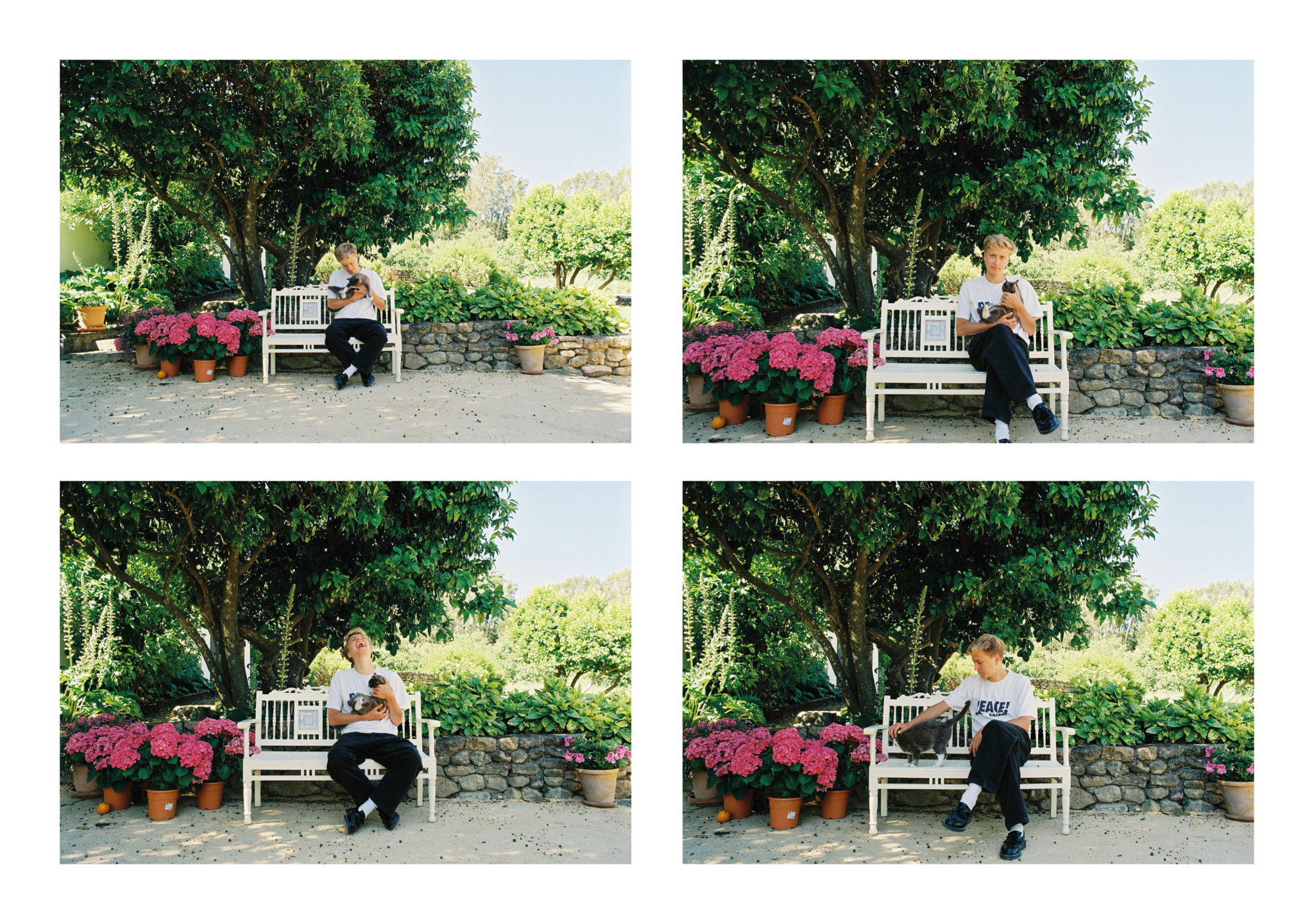The Blue Moods of Teison
Published on the 30th of October, 2024

Written by Manuel Estriga & Martim Plantier Varela. Photographs by Martim Plantier Varela (b&w) & Manuel Estriga (colors).
Thies van Zon, a music producer from the Netherlands, spent his early years living around the world in places like Spain, Germany, Poland, and India – his parents moved frequently due to professional reasons – before returning home at 16. Around that time, he started his music project, Teison, which he has been developing alongside his studies, professional work, and DJ gigs. His journey has been anything but linear, it’s in moments of uncertainty that Thies has found his path.
Creating music requires courage, dedication, and relentless effort—qualities Thies embodies. His commitment to perfecting his art and staying true to his vision consistently results in beautifully coherent and heartfelt pieces of work. It’s no easy feat to compose music with a clear structure—beginning, middle, and ending with a natural flow—but Thies manages to achieve that with an unwavering passion and authenticity that we deeply admire.
Between May 20th and 22nd, 2024, we visited Thies, in his family house, in the quiet town of Medina-Sidonia, near the Spanish city of Cádiz. Thies often retreats there when he needs to fully immerse himself in finishing his songs or projects, away from worldly distractions. With the upcoming release of his next EP Angels, we decided to join him in the very place where his music comes to life.
During our three days together, we deepened our connection, explored the town, and talked about music, his childhood, influences, career, creative processes, projects, his life in Copenhagen, and the future. It was a peaceful and enriching experience, and we hope this essay conveys that. We are incredibly grateful to Thies and his wonderful family, who welcomed us like royalty and made our stay comfortable, interesting, and truly enjoyable.
We recommend you have Teison’s Spotify open by your side while reading the feature so that you can listen to any of the songs mentioned if wanted. We also recommend reading this piece on the computer.
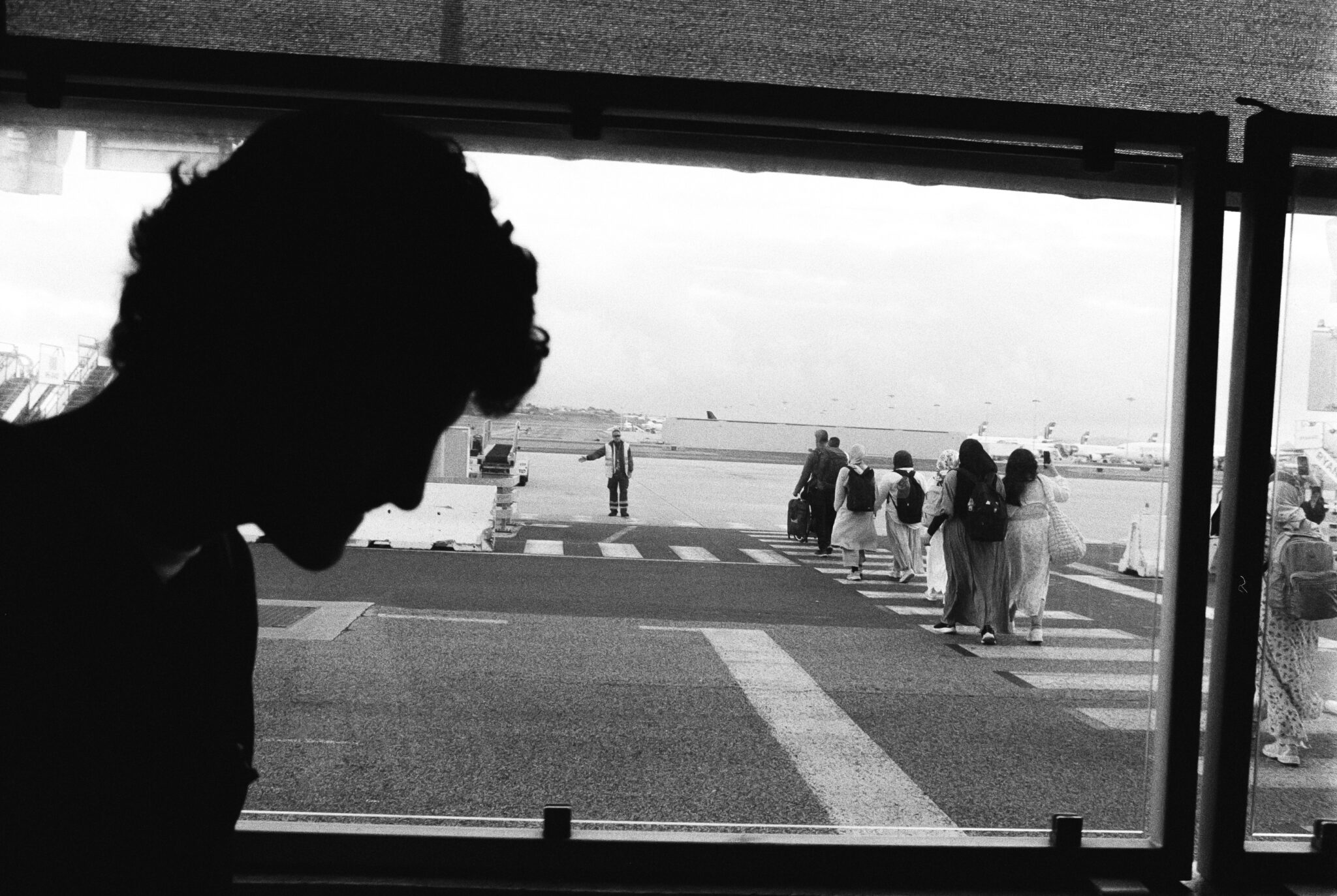
Thies met us at the airport, his demeanor warm and effortlessly natural. After a brief introductory exchange, we hopped into the car and began our journey. We set off down the highway, with the sound of Gazpa playing in the background, heading towards our destination.
Not long after, Thies suggested we hit up a nearby gas station for a tostada. We were all for it since we’d been travelling since the crack of dawn and hadn’t eaten anything yet. We got pretty excited about the idea.
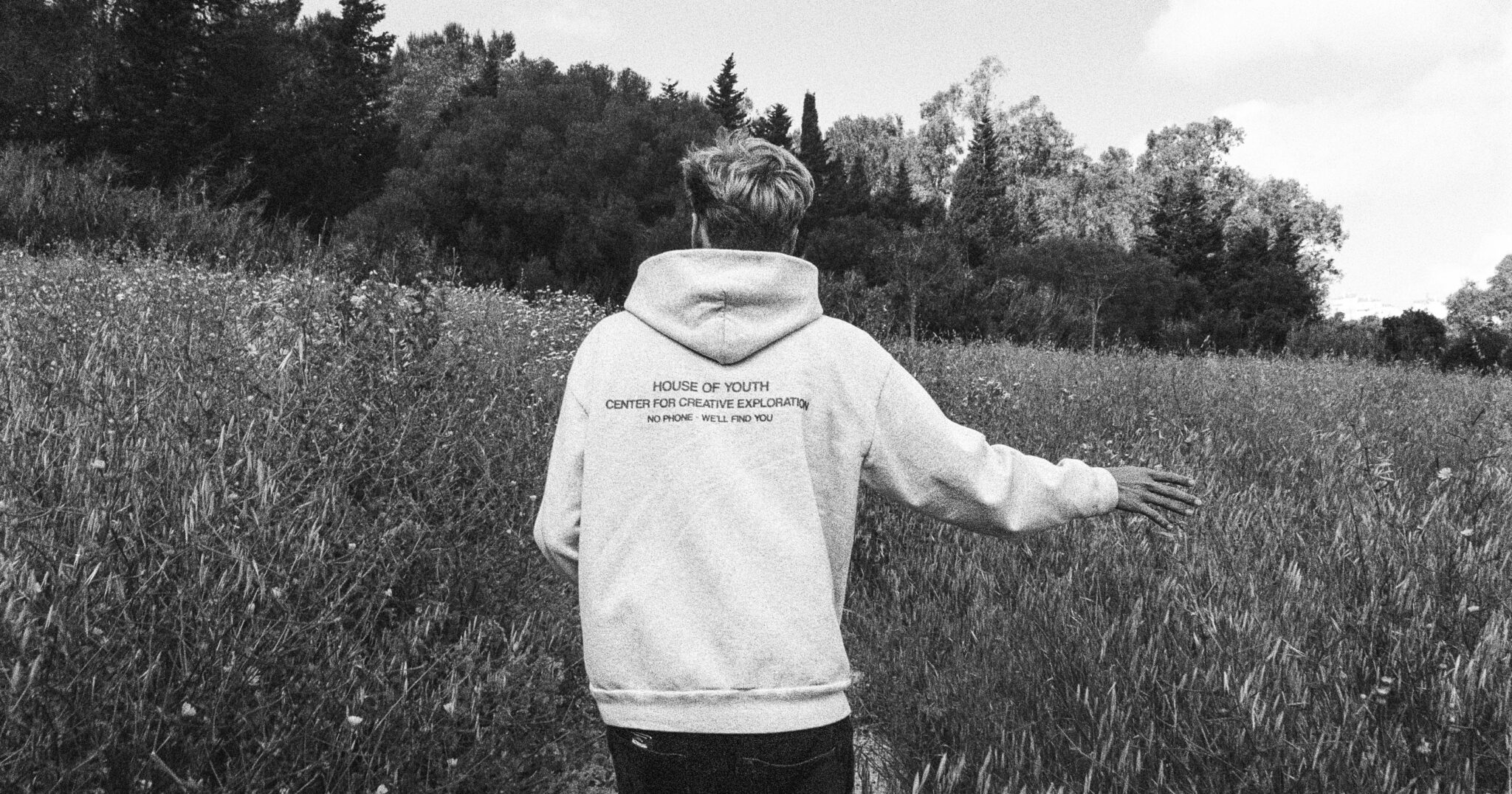
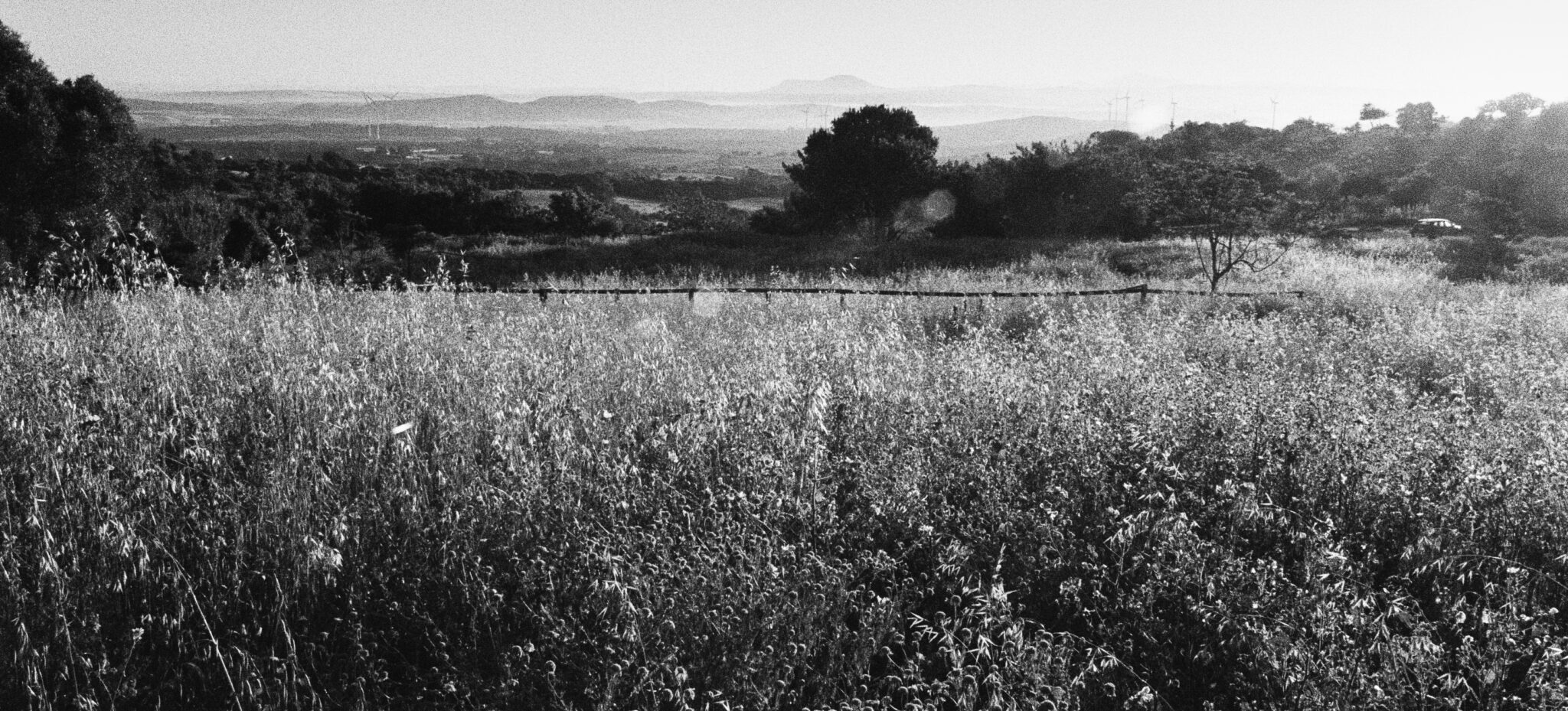
An hour and a half later, we arrived at the house and were greeted by its beauty and charm. The first to welcome us was Thies’ father, who stood at the entrance of a truly magnificent home.
Thies started by learning the saxophone early on in his life, but it was only in India that the first contact with music-making happened. As his music teacher made him fall in love with Ableton (a Digital Audio Workstation used to make music), his interest in electronic music grew, and he started spending hours watching YouTube tutorials on how to make music. It was also in India that Thies started exploring his passion for DJing and playing his first sets.
Taking some piano lessons, and learning about composing, triads, chords, and the basis of music theory was the groundwork that allowed him to develop his production style around chords and melodies.
At 16, Thies returned to Amsterdam and briefly paused his DJing career. It was then that he and his brother Stijn began collaborating on their music project, Teison, producing and performing several songs, including their first release, “Floating Away”.
At 18, as university life took over, Thies found it difficult to find the time and focus to finish music. Lacking a place where to work and a clear sonic direction, he hit a creative block. Nevertheless, Thies continued experimenting and producing demos that never felt quite right. Frustrated by this stagnation, he took a six-month break from university to fully dedicate himself to finishing an EP. He drove to his parents’ house in Medina-Sidonia, Spain, a place that offered peace, proximity to the sea, and time and space to focus solely on his craft. For seven weeks, Thies retreated there and worked on finishing songs.
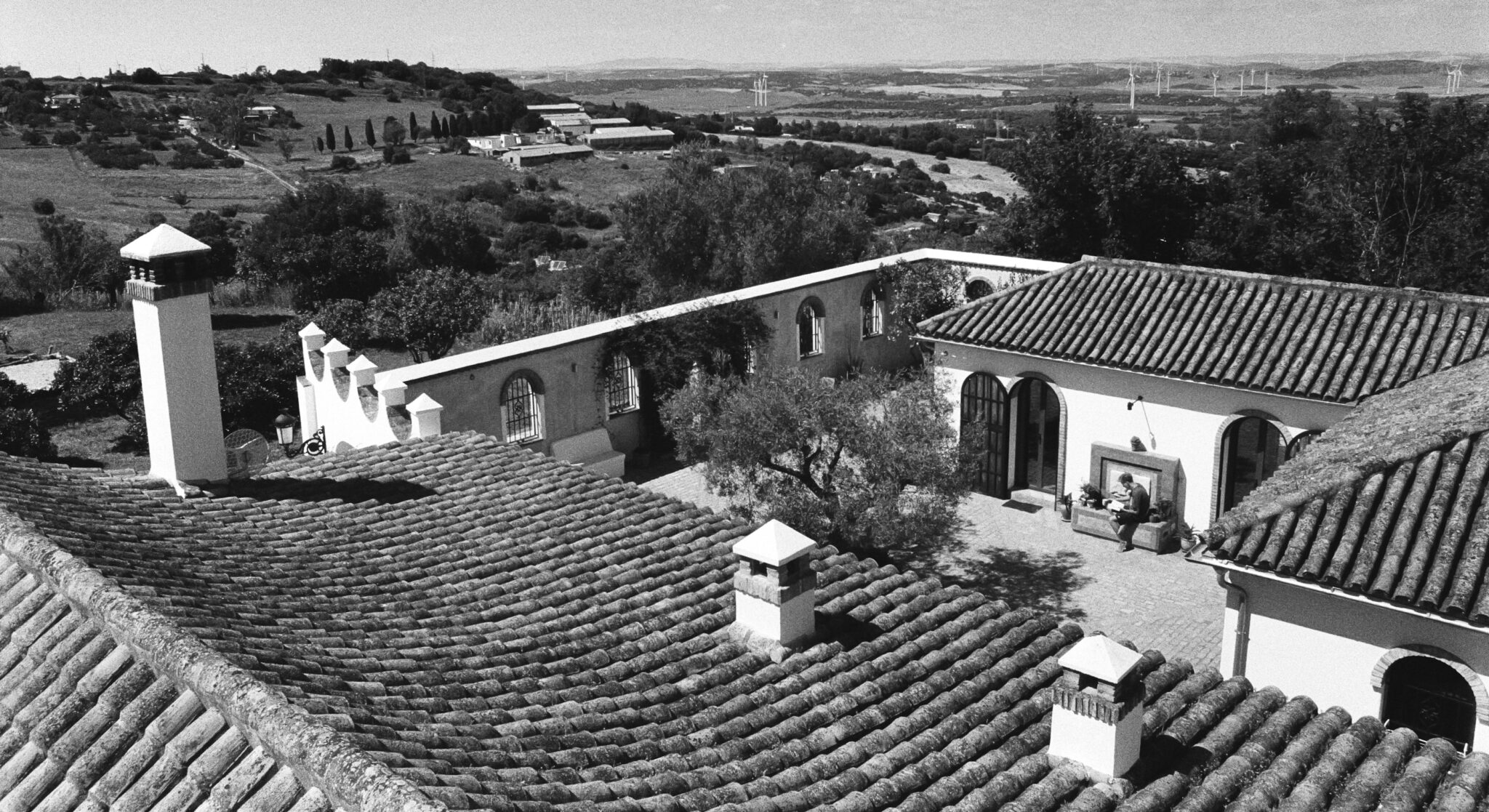
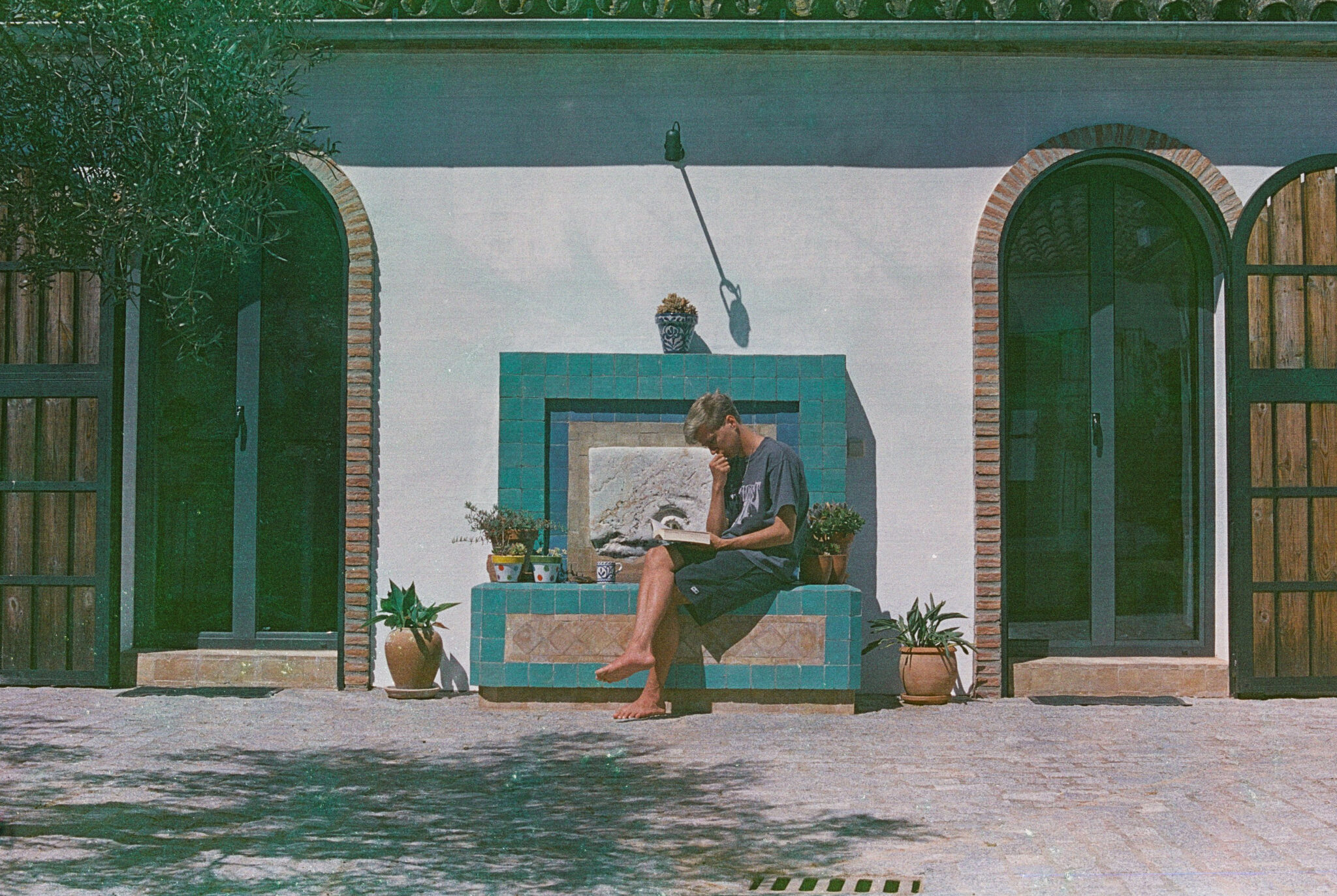
The exterior of the house is expansive, boasting an array of meticulously maintained plants and trees, each contributing to the tranquil atmosphere. The architecture of the house tells a story of a life lived across cultures, with its blend of brick, Moroccan tiles, and large wooden doors. The interior spaces are vast and open, spacious rooms decorated with books.
In just four days there, Thies composed “Mi Alma,” a song that flowed effortlessly and reawakened his creative spark. He described it as an intuitive and beautiful experience, unlike anything he had felt in years. With Stijn’s guidance in the final stages, they finished the EP Mi Alma by the end of the seven weeks.
Thies’ creative process starts with discovering chords and melodies on the piano. Only once those foundations are in place does he move on to production, often struggling with this phase. He also incorporates recordings from his life—ambient sounds from places like Copenhagen, London, and Spain—into his tracks, adding personal depth to the music.
One of his notable tracks, “The Space in Between (Interlude)”, is a piano piece inspired by his grandmother (a lady who played the piano her whole life), featuring a recording of her voice. Another, “Under Stars”, was composed outdoors, at night, during a family vacation in Belize. Thies has a habit of naming his songs after books he’s reading, such as A Little Life, which inspired the naming of the closing track of Mi Alma.
With his brother Stijn’s help, likened to that of a “Rick Rubin” figure, the final touches on Mi Alma were made. Thies told us – “Stijn just says the right things with the perfect approach. He also perfected the approach of not only saying his opinion but also being able to see how the song could be better and more concise.”
After its release, Thies had a breakthrough moment when “Mi Alma” caught the attention of &ME, one of the members of Keinemusik. This recognition fueled his confidence and drive to continue pushing his work further.
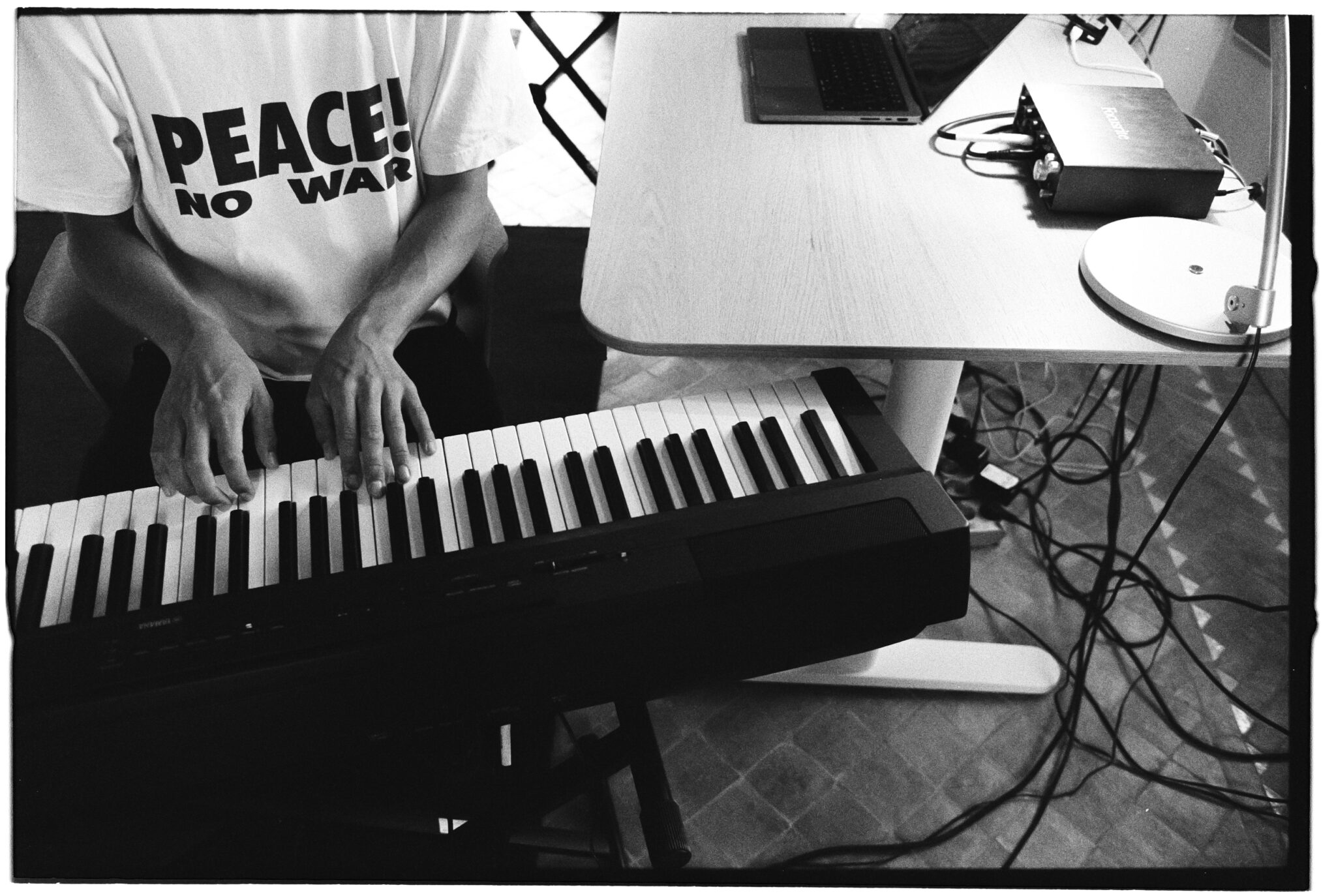
Later, we met Thies’ mother, whose straightforward personality is as striking as her warm hospitality. After a brief introduction, we found ourselves in the studio.
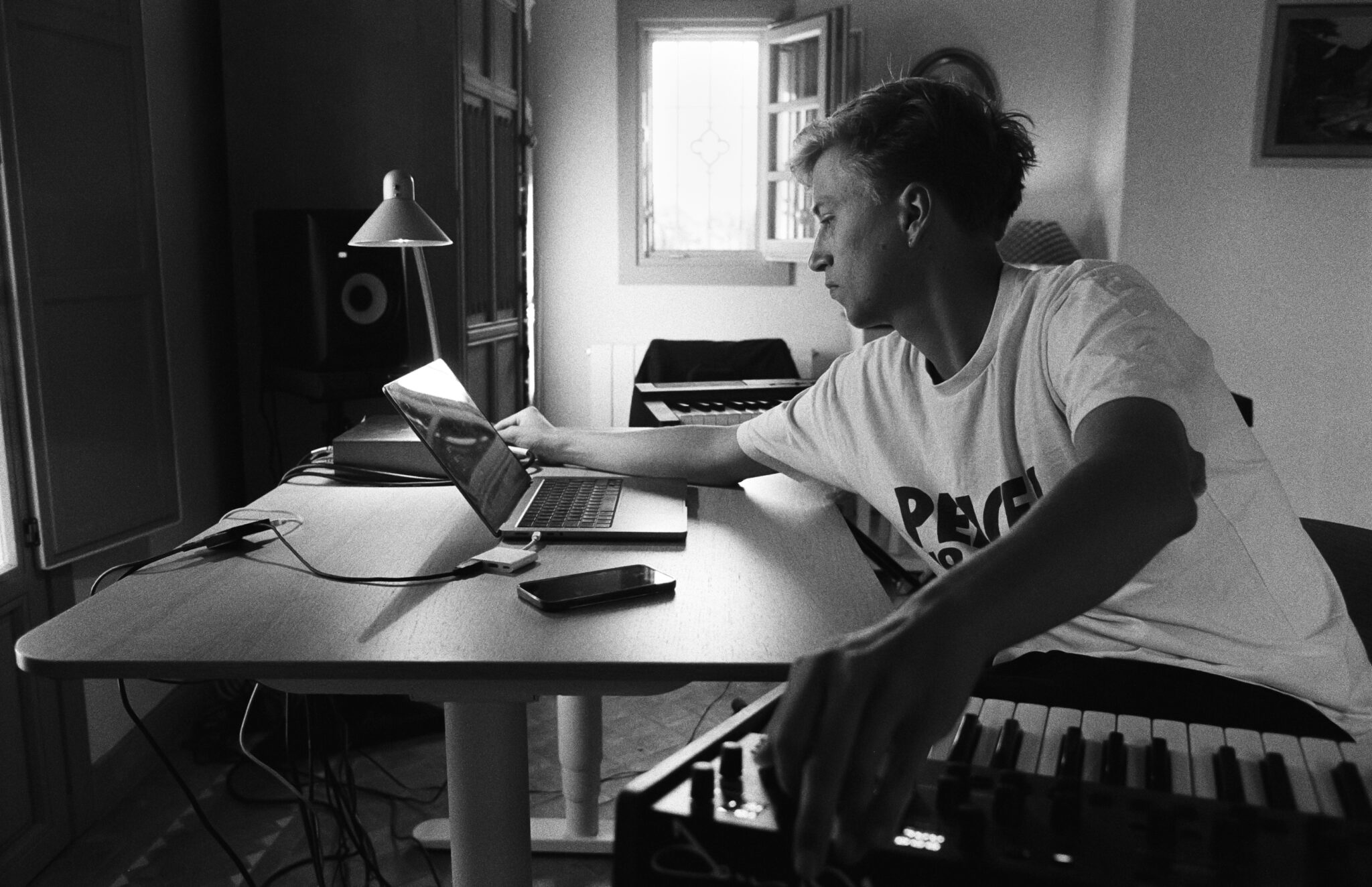
Two weeks after releasing Mi Alma, Thies moved to Copenhagen to begin his master’s in Management in Creative Business Processes at CBS. The city surrounded him with like-minded creative individuals and immersed him in a vibrant, unique, and very familiar club scene. Determined to pursue music seriously, Thies immediately started reaching out to clubs and promoters. First, came a gig at Culture Box. Two months forward, and after a few ignored emails, Thies landed a last-minute set at Hangaren, an iconic club in a former airplane hangar. This led to opportunities he could never have imagined, such as opening for Ross from Friends and securing a spot at Karrusel Festival 2024.
In the last two years, while juggling his master’s, a student job, and DJing, Thies also worked as the head of artist care for the O Days festival in Copenhagen. Despite the challenge of balancing all these commitments with making music, Thies found solace in a studio where he goes and works on music whenever he has spare hours. However, the challenge of balancing everything, often makes it hard for him to finish projects, which is why his regular retreats to Medina-Sidonia are so crucial to his creative process.
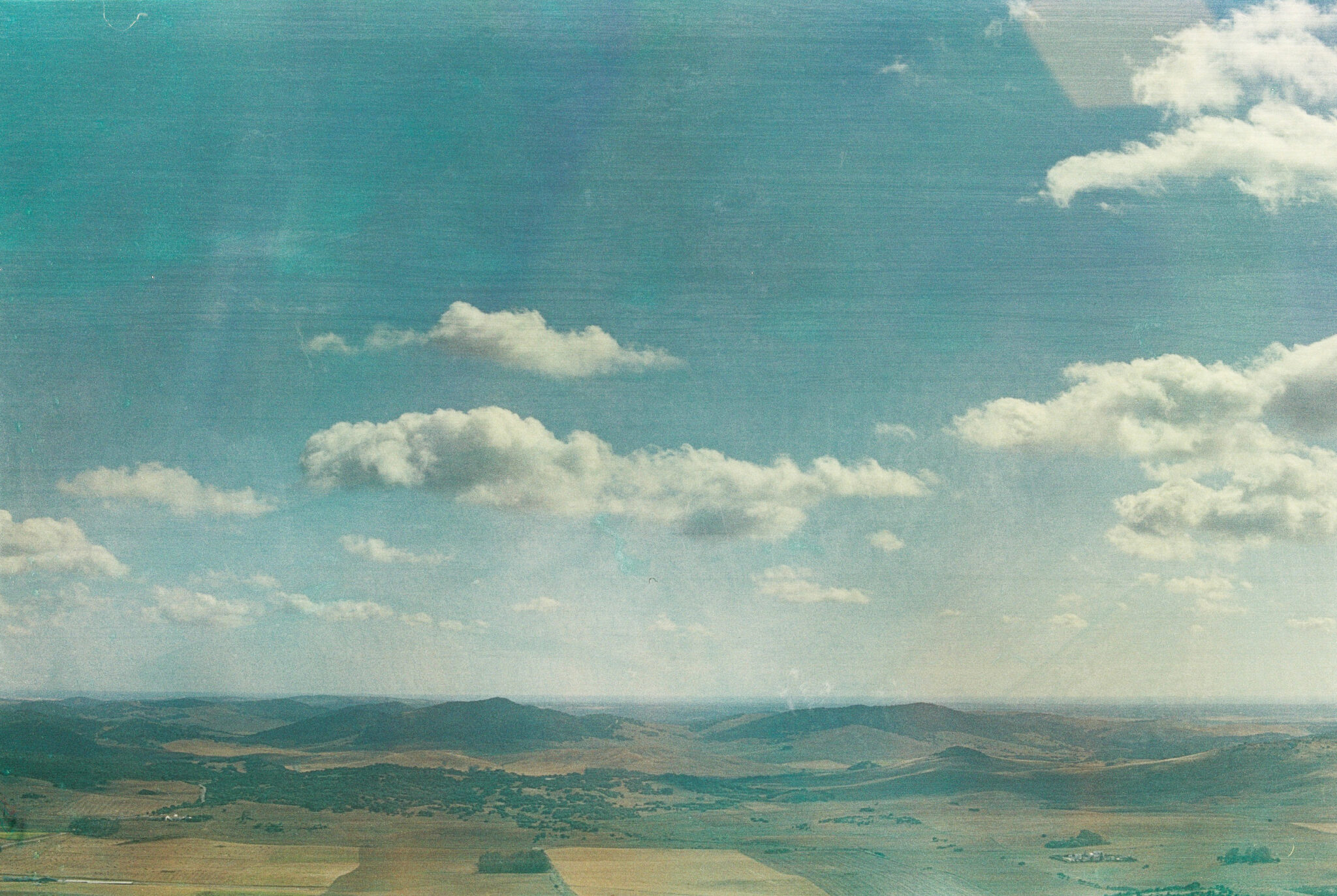
The remainder of the day—the first of our stay—unfolded in peaceful ease. After taking some time for ourselves, and indulging in a well-deserved siesta, the three of us ventured out to the Medina. The views stretched endlessly across the fields until meeting the horizon. Just like a fly limits its flight when confined, the human mind also requires the ability to see the horizon—and beyond—to expand its thoughts.
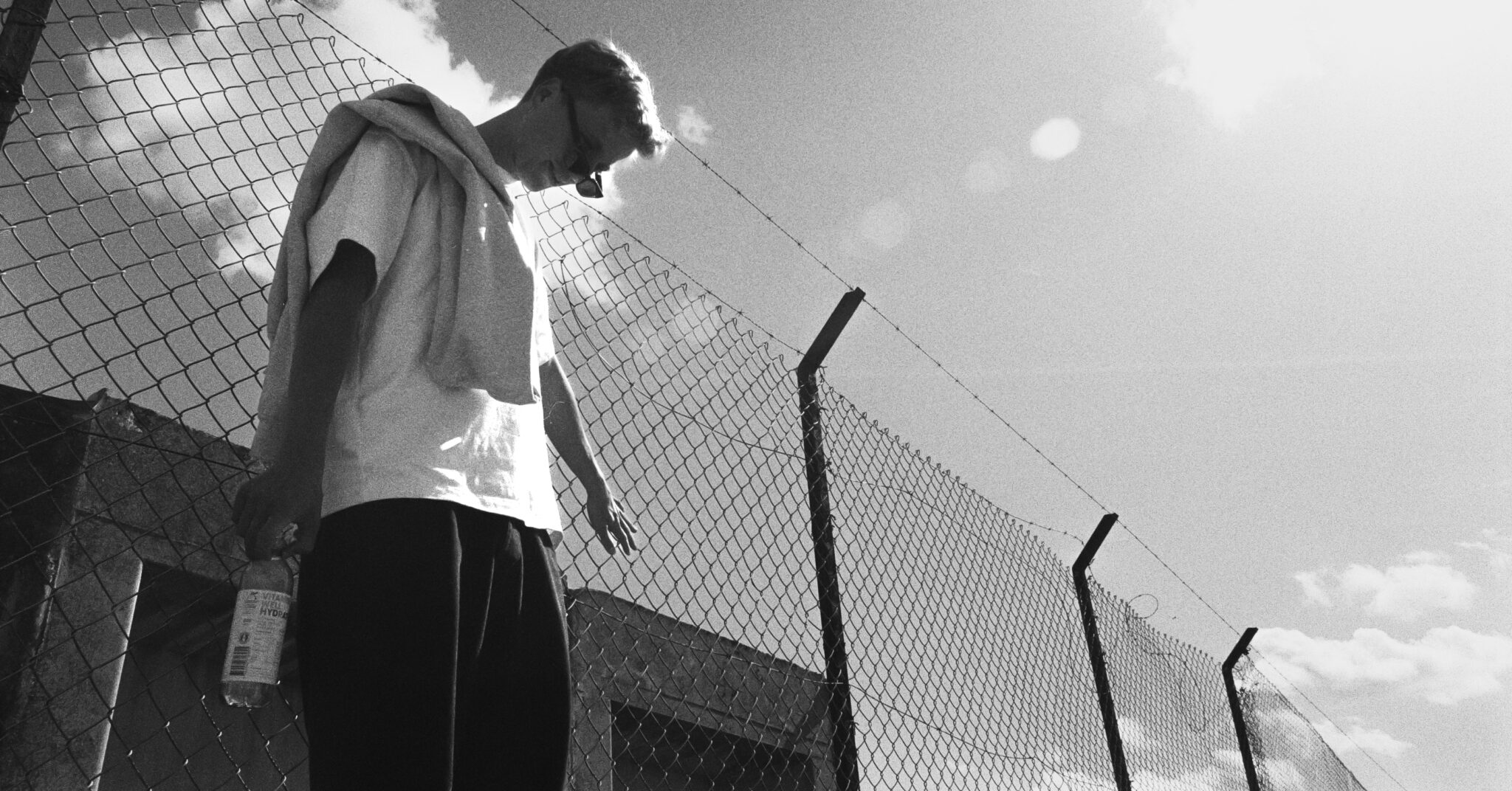
We wandered through the labyrinth of narrow, white-walled streets, like lost ghosts in a forgotten village. Finally, we found ourselves in the main plaza, where we sat down, savoring a coffee as we continued our conversation.
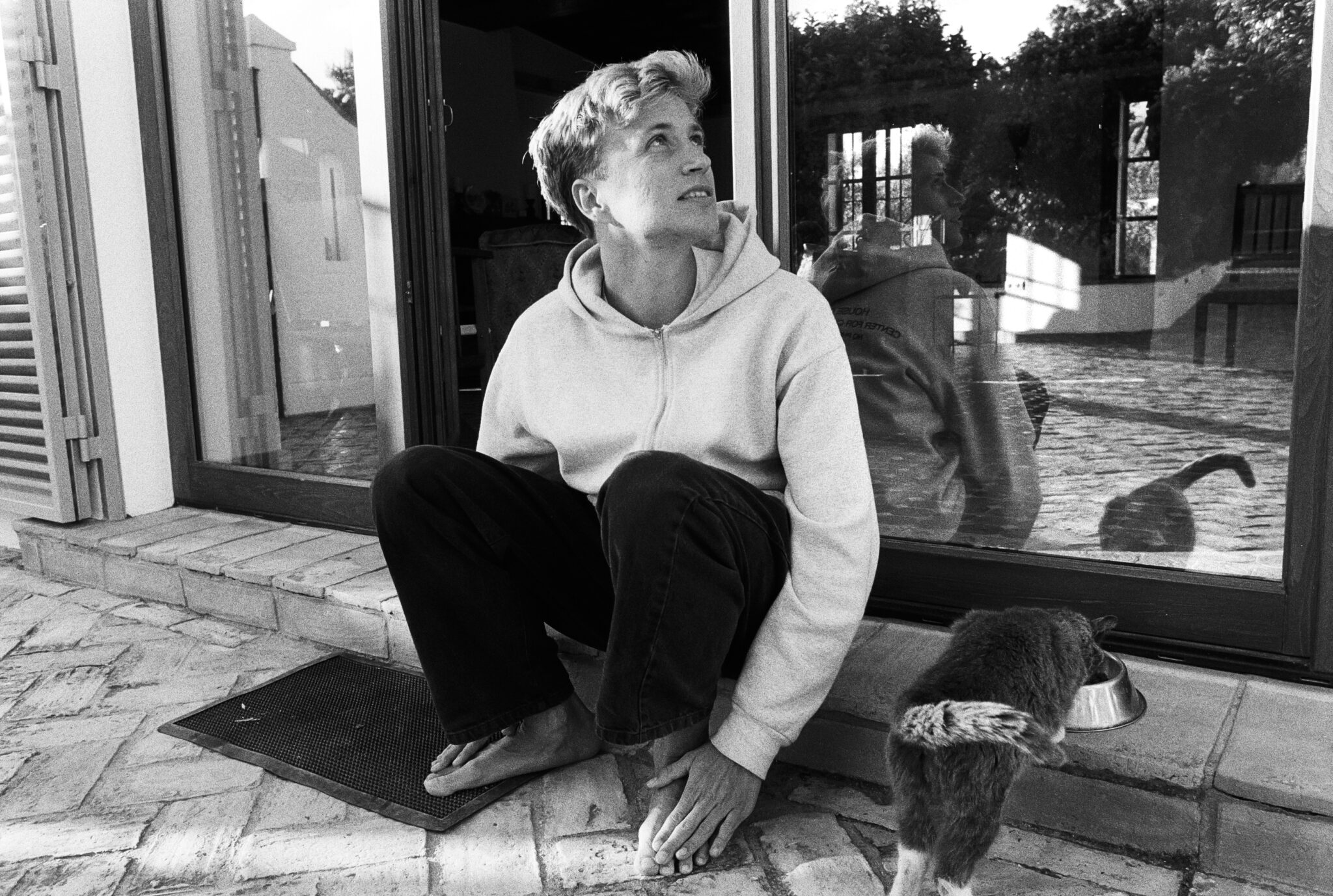
The shadows were steadily claiming more ground in the plaza, signaling to us that it was time to head back home. Our presence was anticipated at dinner, and the fading daylight was our gentle reminder that the evening was waiting.
Angels, Teison’s sophomore EP, has been in the works for two years. During this time, Thies was DJing heavily in Copenhagen, which sparked an interest in house, techno, and club music. However, as he worked on the EP, he realized that making club music in its conventional form wasn’t his true nature. For Thies, every song begins at the piano, with simple yet beautiful chords.
His process involves a lot of experimentation, making random demos until he stumbles upon the right chords, which then become the core of his tracks. “I usually know from the beginning if something will be good,” Thies says. Once he finds the right chords, he develops them into the foundation for the song. The challenge often lies in settling on the production, as the many creative possibilities can lead to countless versions of the same track. “Too many possibilities kill all possibilities,” he admits.
To finalize Angels, Thies travelled again to Medina-Sidonia, having spent three and a half weeks there this January. His brother Stjin was again instrumental in helping him determine when the songs were truly finished. “On my own, I have no clue,” Thies confesses, grateful for Stijn’s input.
During his last stay in Medina-Sidonia, Thies made the conscious decision of not listening to any music while composing Angels. This proved essential, allowing him to create without being influenced by external sounds. As Thies put it: “It was good to not listen to music when things weren’t going well. Filling that space with other music would delude the process.” This quietness enabled him to focus solely on the music he imagined and wanted to hear, even though he acknowledges that no one can ever fully replicate the music in their mind. “That’s why you keep doing it,” he adds, “that’s why you keep putting it out.”

The shadows were steadily claiming more ground in the plaza, signaling to us that it was time to head back home. Our presence was anticipated at dinner, and the fading daylight was our gentle reminder that the evening was waiting.
In Medina-Sidonia, Thies developed a routine: mornings of journaling followed by long hours in the studio. Afternoons were for relaxing by the pool or walking—an attempt to unlock inspiration when work stalled. One of his biggest challenges was perfecting “Angels (Long for Tears of Joy),” which went through 20 versions before he stripped it down to its core elements: the harp, chords, and breakbeat. He realized that “the essentials were there from the beginning.”
The title “Angels (Long for Tears of Joy)” is one that stuck with Thies for a long time after he heard it two years ago. It’s premise is the idea that if angels were to exist in a so-called heaven, in a place with no tears, angels would long for tears of joy and gratitude. It’s exactly those feelings that he tries to reach in the music he makes, – “profound, bittersweet feelings of gratitute, joy, and sometimes sadness. that’s what this EP means to me”. This reflection process helped shape the emotional depth of Angels, a project that embodies not onlyThies’ musical journey but his personal growth as well.
Getting the vocals right for “Blue” was a process of trial and error for Thies and Stijn. They spent countless hours refining them. As Thies explained, “Vocals always add something special; they ground an electronic piece and give it a more human touch.” For Thies, capturing the right vocal take requires solitude, intense focus, and ample time to experiment. The title “Blue” was inspired by Rebecca Solnit’s essay “Blue of Distance,” where she explores the color blue and how it evokes a sense of distance and mystery, an idea that deeply resonated with Thies as he developed the EP’s artwork.
“To Love is To Let Go” began with a simple chord progression created on the computer. Thies then transferred the MIDI pattern to his OB-6 synthesizer, where he manipulated the sound with its knobs. The inspiration for this track came from Thies’ experience in a long-distance relationship, where he learned that to love means learning to let go—a theme reflected in the song’s title.

On the following day, inside the studio, the sunlight streams in gently, casting a perfect glow on the OB-6, his beloved synthesizer, the instrument through which he has crafted Angels. His creative process remains an enigma. The sounds he conjures and the gestures he makes belong to a realm entirely unique to him. There is a certain unpredictability to it all, as versions pile up with no clear destination in sight.
Reflecting on the time that passes between finishing a project and its release, Thies noted, “It’s strange how much time passes after finishing something. But I’ve learned that rushing isn’t worth it. It’s nice to let a project sit, to make sure it’s really done before moving on.” Since his early days, Thies has embraced the importance of letting his work breathe, ensuring that by the time he releases it, it’s something he truly cares about. This careful, reflective approach helps ensure that each of his songs has time to mature before being shared with the world.
Every time Thies and Stijn wrap up their EP sessions in Medina-Sidonia, they have a ritual of playing the finished tracks for their parents. As Thies describes it, “It’s super cute; they sit on two chairs with their eyes closed. They’ve never really listened to electronic music, but there they are, bobbing their heads to Angels.” These listening sessions have become cherished moments, blending their family’s support with the culmination of Thies’ creative work.
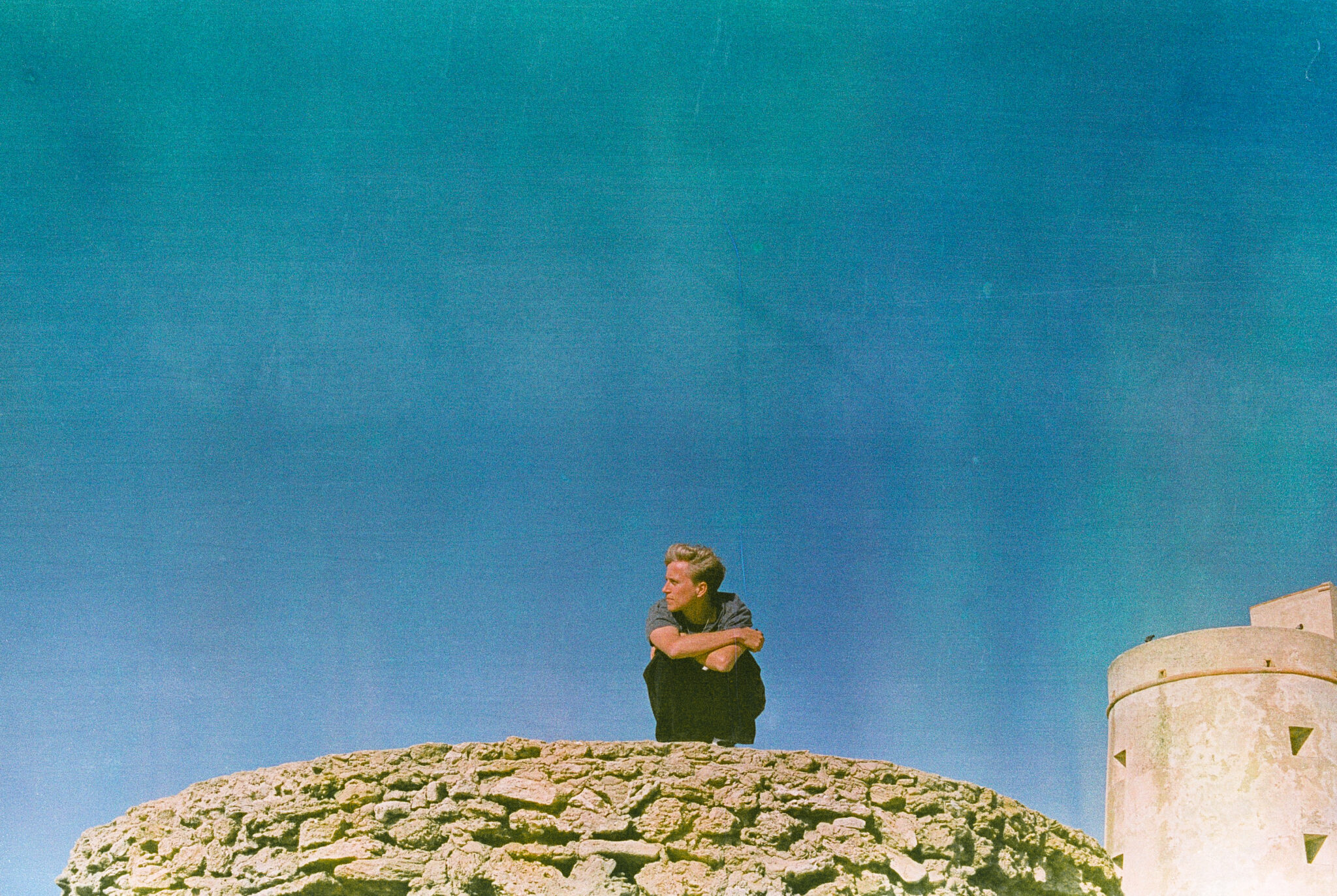
The sun had already begun its descent in the sky when we got into the car and set off towards El Palmar. We had a half-hour drive ahead of us, and by this point—after a day and a half spent with Thies—we found ourselves uncovering new questions and ideas that we hadn’t anticipated in our initial plan. We took advantage of this moment to delve into these thoughts.
A small village by the sea, with a long road lined on one side with countless beachside businesses and on the other, the endless ocean. Thies often surfs in this area, which is why we’re here. Surfing is as much a part of his creative routine as sitting at his desk to compose. The beach stretches out infinitely, a vast expanse of sand that seems to go on forever.

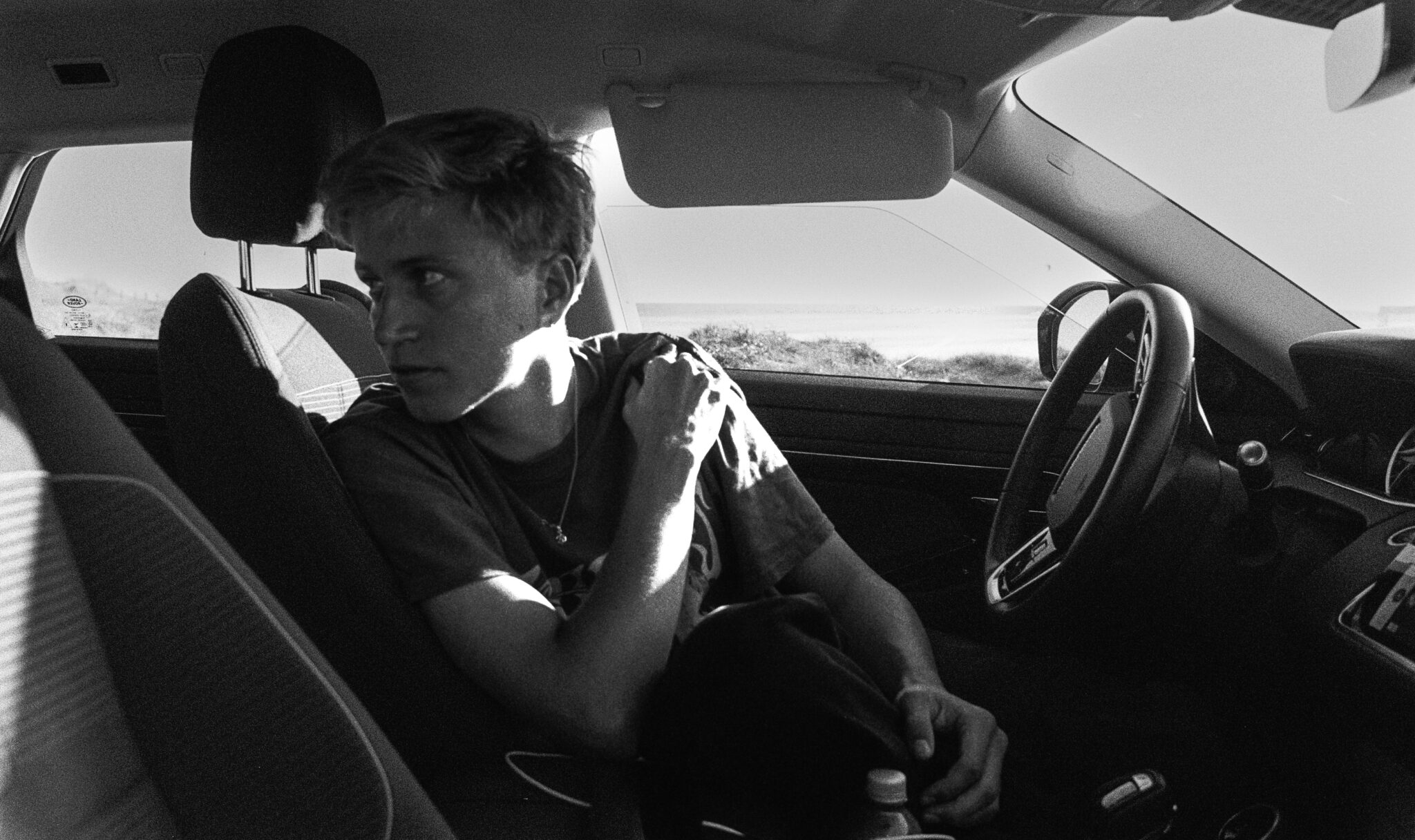
We parked the car at the end of the road, only to realize that the sun was still too high for the photos we wanted to take. So, we got back into the car and, naturally, continued our wait, passing the time in conversation. From this, more questions arose.
For Thies, the essence of creation lies in its human origin—people choosing to make something purely out of intention, without any pressing necessity. “That’s what music is,” Thies reflects. “Humans make stuff for no real reason. There’s no urgency. It’s a societal way of talking to each other and giving meaning to the world.” He finds fascination not just in the music itself, but in diving deep into the stories and processes behind it, which enhances his appreciation of the work.
The continuity between Thies’ two EPs, Mi Alma and Angels, is marked by their shared finishing point: Medina-Sidonia. Angels feels like a natural progression from Mi Alma, showing the evolution of Thies as an artist. With this new release, Thies feels he is closer to finding his own unique sound than he was two years ago.
The cover art for Angels was a collaborative effort between Thies and photographer Jakob A. Reimann, who successfully captured the visual aesthetic Thies envisioned for the EP. The use of dark blues and reds evokes a slight melancholy, and the inclusion of ocean imagery ties back to Thies’ personal connection to the sea and his creative process. “We wanted to capture the dark blues and reds,” Thies explains, “To me, that’s what the music feels like.”
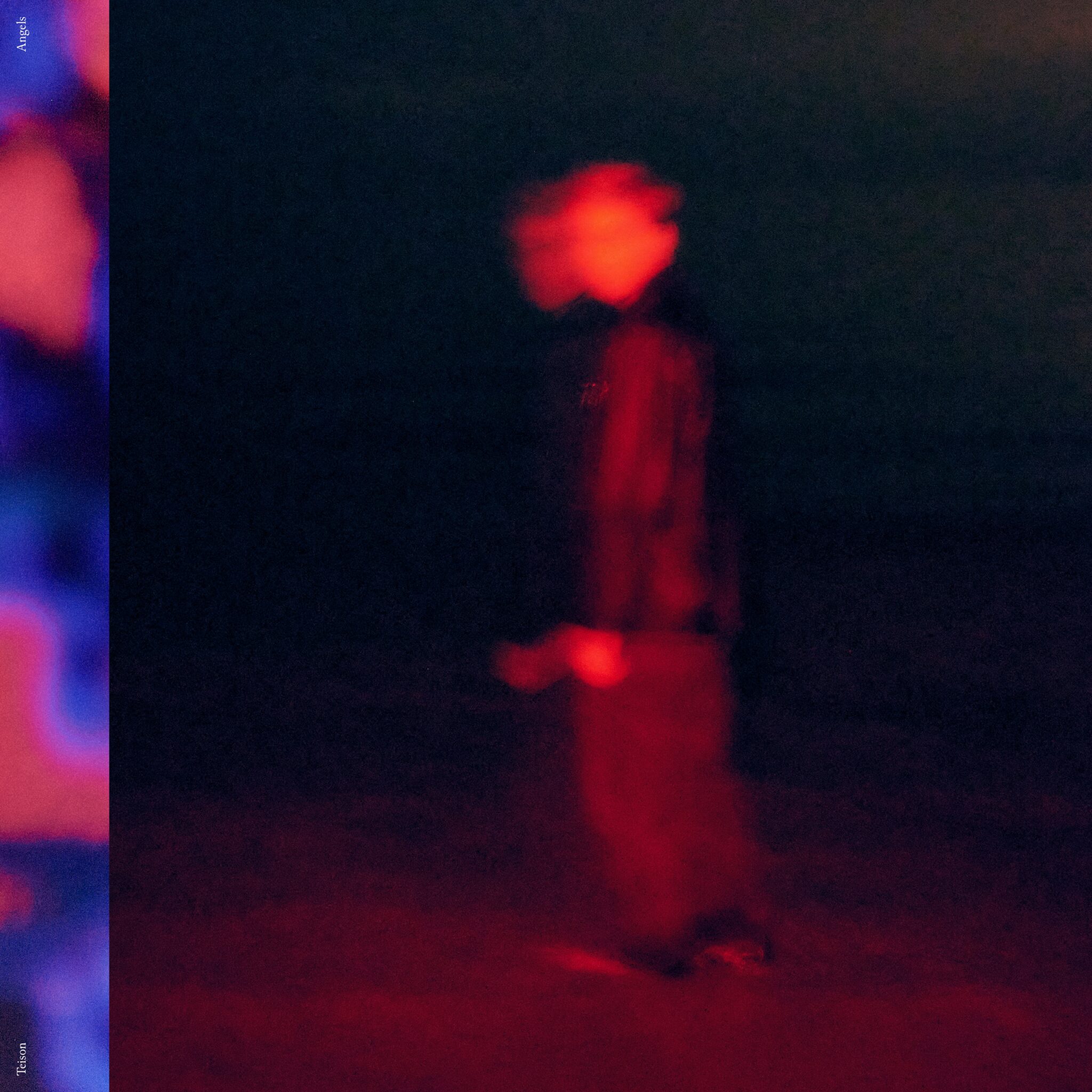
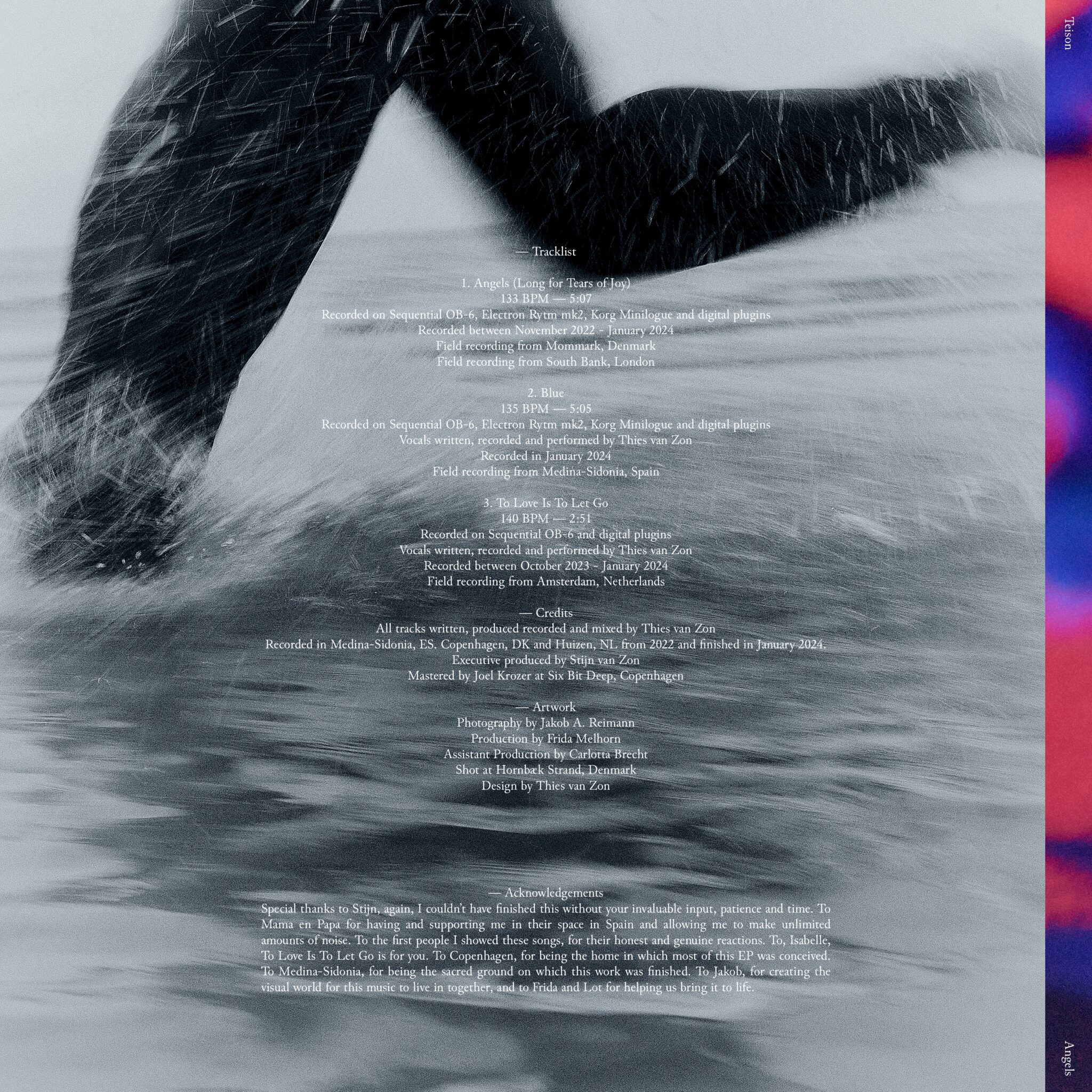
Photographs by Jakob A. Reimann, design by Thies van Zon
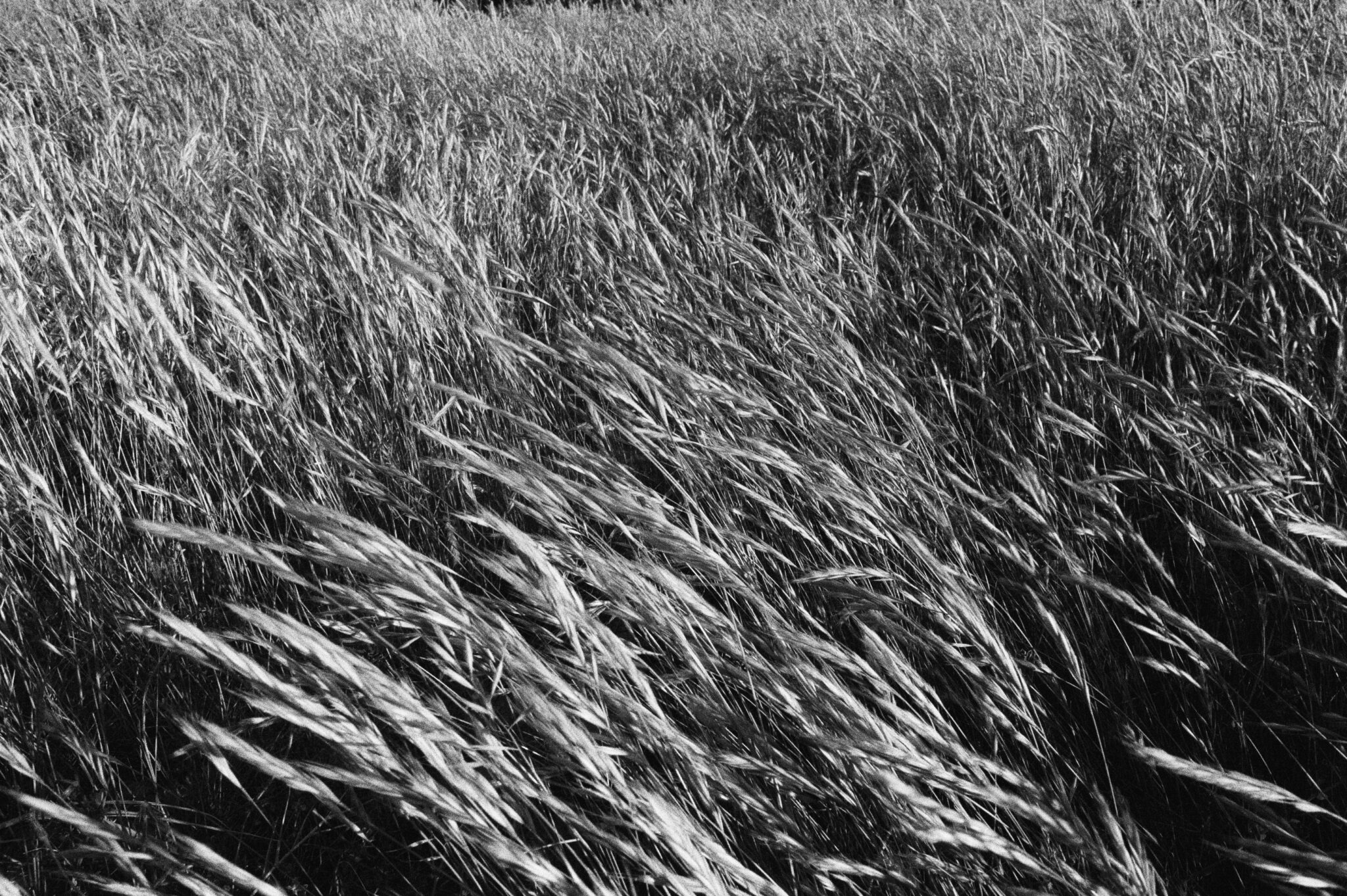
It’s fascinating how our friendship with Thies over these past few days has deepened the connection to his work. The parallels between our journeys as young creators are comforting. We strive to create something that truly resonates with us, nurturing it over time, and hopefully sharing it with the world. There’s always the uncertainty about the quality of what we’re producing—the question of whether it’s finished to its fullest potential or not. It’s good to return to the essence of why we tell stories: to connect more deeply with our shared humanity and to realize that, in the end, our worlds aren’t so different.
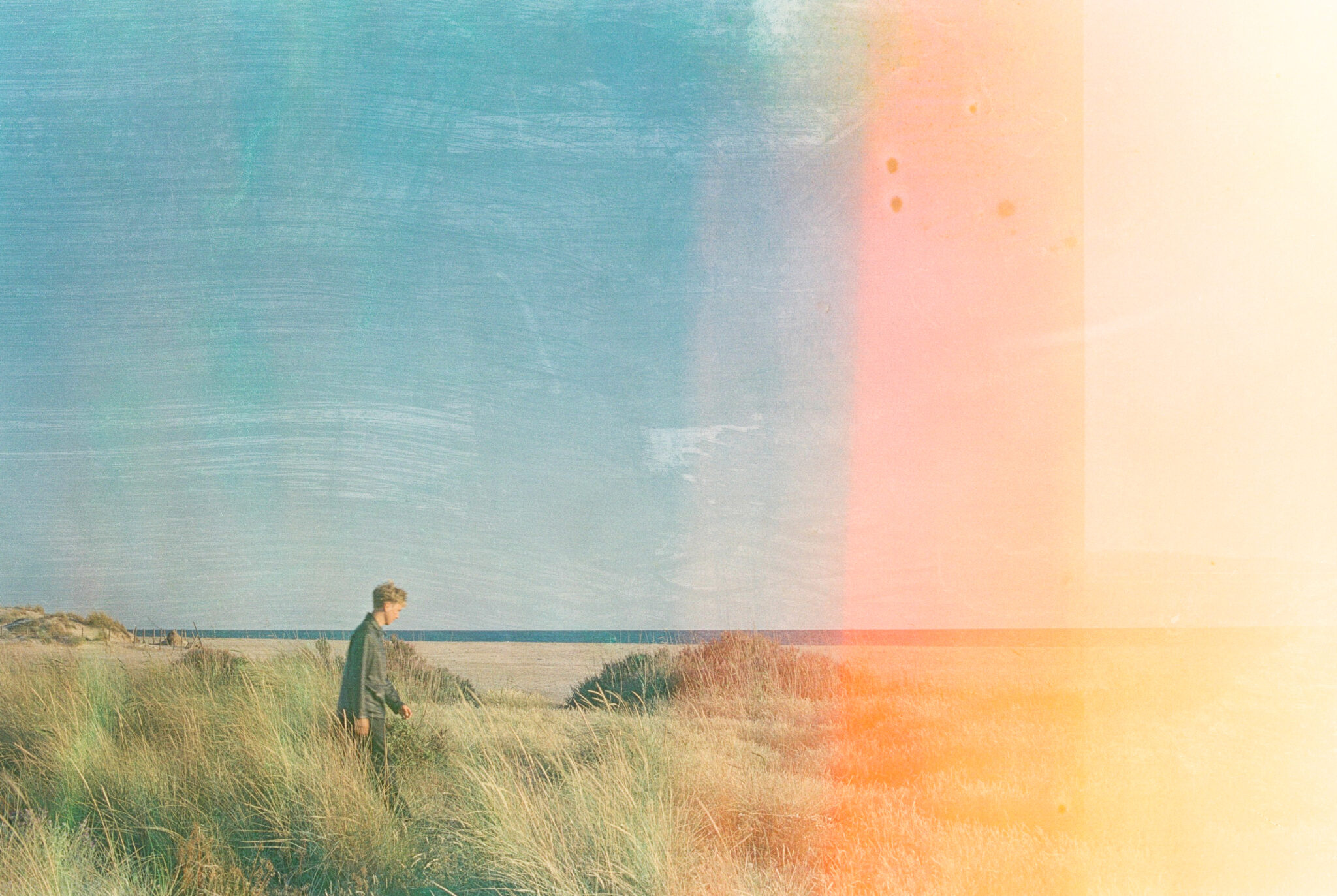
As the sun dipped lower, we walked along the sand and dunes. By this point, we had peeled away most of the layers of getting to know each other; a sense of calmness settled between the three of us, reinforced by the serene landscape. Without any rush, we captured the images we wanted and then decided it was time to find something to eat.
Meanwhile, Thies continues to work on other tracks that have been in progress for some time, including a particularly challenging one titled “Kafka.” After nearly what seems like 400 versions, the song still hasn’t felt quite right. Thies admits that his creative process is slow and deeply personal, which is why he rarely collaborates with others. “I find it hard to find a midpoint between two people’s tastes and expectations,” he explains. He prefers to sculpt the music himself, having a clear vision of what he wants Teison to be and of what he doesn’t want to create.
Despite this, Stijn remains his ideal collaborator—someone who doesn’t impose but rather guides Thies to where he needs to be. “None of these EPs would have been finished without him,” Thies reflects, appreciating the balance that his brother brings to his process.
Looking ahead, Thies hopes to fully commit to music. He envisions structuring his creative process more like a regular workweek—perhaps working part-time while dedicating the rest of his time to studio sessions. “Inspiration or no inspiration,” Thies says, believing that consistency and treating the studio as a routine can help him become more productive and create more music.

The sun dips below the horizon as our time in Medina-Sidonia draws to a close. Thies is already preparing for what comes next, but for now, the peace of this place is reflected in the melodies that echo from his studio — a testament to the power of silence and solitude in the creative process.
